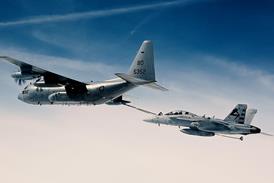Kevin O'Toole/LONDONPaul Phelan/CAIRNS
Qantas chairman Gary Pemberton, unveiling a modest increase in profits for 1996/7, has warned that the carrier will have to step up its drive to cut costs and improve yields if it is to have a chance of further improvements over the coming financial year.
The airline posted an improvement in its headline net profits to A$253 million ($187 million) for the year to the end of June 1997, but the underlying figures also show a sharp decline in passenger yields in the face of fierce international competition and a sluggish domestic market.
Pemberton says that "tough trading conditions" are expected to continue over the coming year. "We expect demand in the domestic economy will remain soft, putting pressure on yields and volumes in both our international and domestic operations," he says.
"We are still cautious about the prospects for the 1997/8 year," he adds, although the airline is targeting "a small improvement" in operating profits, which Pemberton concedes will have to come from new efficiency drives within the company rather than any major growth in sales revenue.
Despite steady traffic growth, sales edged up by only 3% to A$7.8 billion last year while passenger revenues rose by less than 2%.Passenger yields were down by 6%, although around half of the fall was due to currency fluctuations.
International services were worst affected after heavy price cutting, resulting in sales growth of only 4%despite a 9%boom in passenger traffic. Operations to New Zealand and Japan posted losses, although new routes to Mumbai (formerly Bombay)and Shanghai were "encouraging" says the airline. In domestic markets, revenues and passenger traffic both grew by less than 4%.
Qantas, however, managed to compensate for the fall in yields through a 2.3%cut in unit costs. It reports that new efficiency initiatives launched over the last financial year yielded total savings of A$564 million. Qantas has already signalled a major new initiative, by calling for outside bids for contractors to replace ramp and passenger service staff at four key airports.
Efforts to improve yields are also being stepped up, spearheaded by the A$560 million three-year programme announced in May to upgrade the fleet and improve cabin service levels. The programme has already cost Qantas A$56 million as it accelerated the write-down of existing cabin assets. This cost, together with A$60 million to cover redundancies, wiped out the airline group's A$99 million windfall profit on the sale of its Air New Zealand shareholding.
Rival Australian carrier Ansett has yet to announce results, but part-owner News Corporation says that they represent only "a marginal improvement" on last year's break-even result.
Losses rose at Ansett International resulted from aggressive competition in the Japanese market, and start-up costs from new services to Jakarta, Korea, and Taiwan.
Source: Flight International























